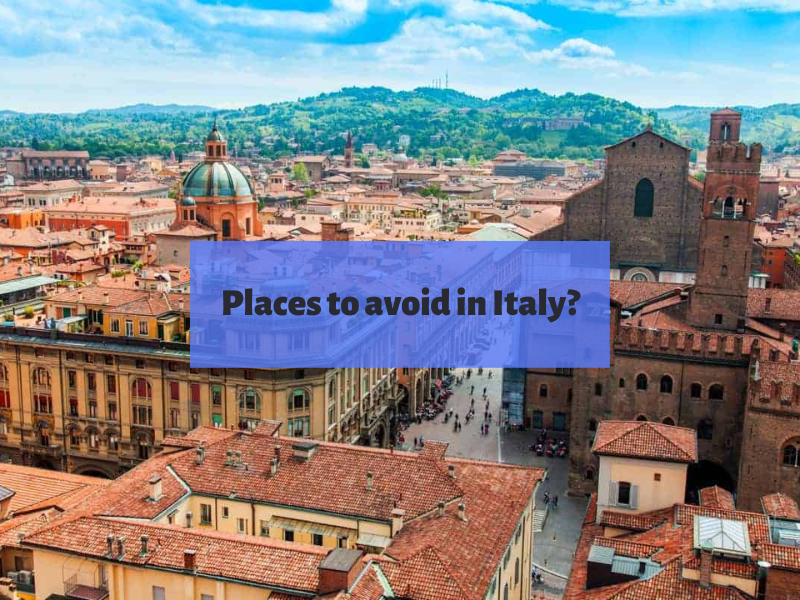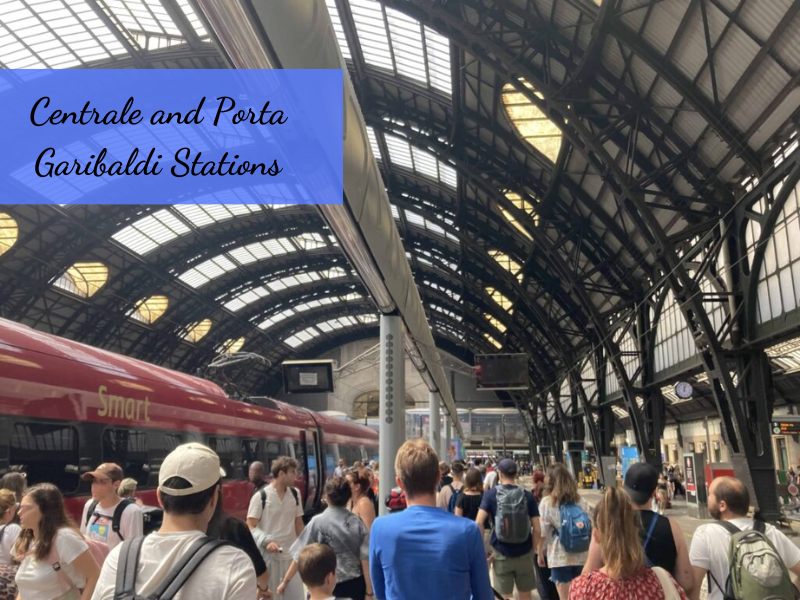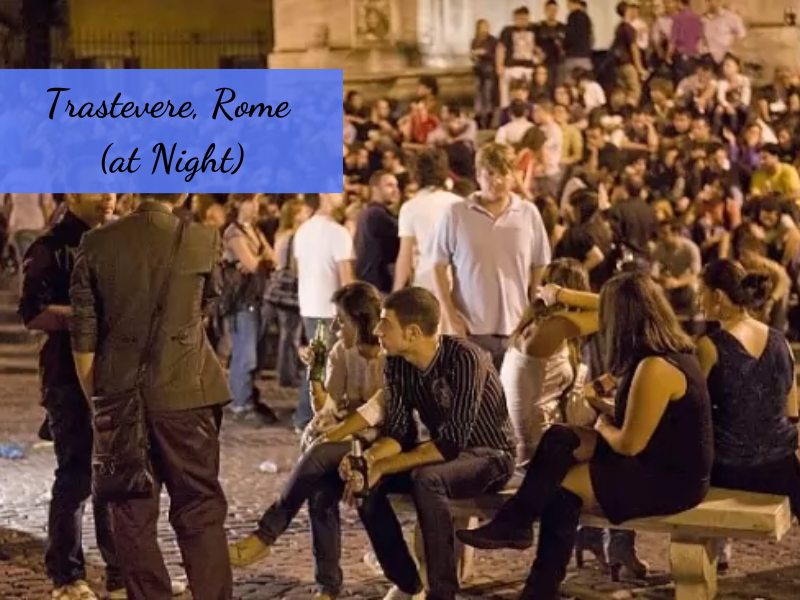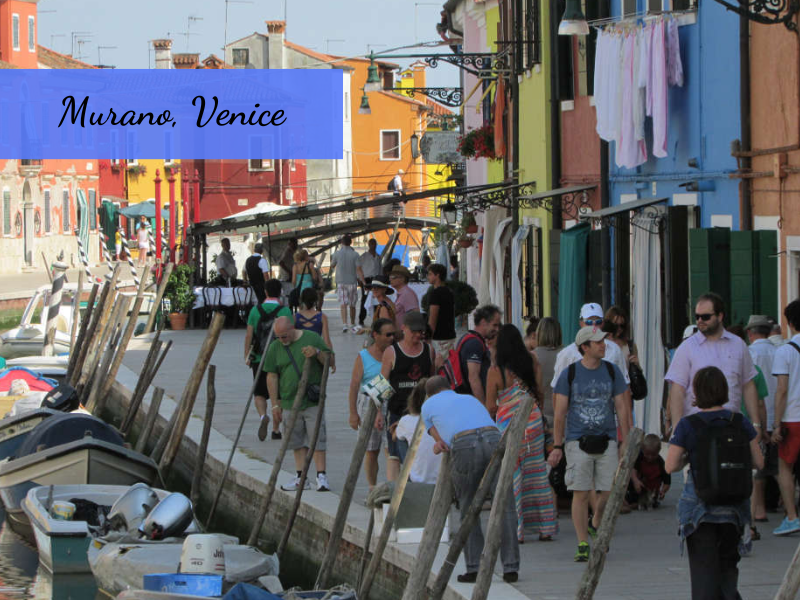When planning a family vacation to Italy, it’s crucial to consider both the iconic attractions and potential challenges in certain areas. While Quartieri Spagnoli in Naples and Sanita offer historical charm, their associations with higher crime rates necessitate caution. Even Rome’s picturesque districts like Trastevere and Campo de’ Fiori, though vibrant during the day, require careful navigation at night due to potential safety concerns. Therefore, I am here to share with you details about 10 places to avoid in Italy.
Being mindful of these considerations ensures a well-informed and secure family exploration of Italy, striking a balance between cultural richness.
Related posts:
- The 7 safest places to live in Italy
- The 5 best travel apps for Italy travel
- The 50 places to visit in Italy
- The 5 best sim card for Italy
- The 5 best pocket wifi for Italy
The 10 places to avoid in Italy

While Italy is generally a safe country for tourists, there are some areas where travelers might want to exercise caution due to higher crime rates, potential scams, or other factors. Here are 10 places to avoid in Italy:
1. Quartieri Spagnoli, Naples
The Quartieri Spagnoli district in Naples is characterized by its unique blend of history and vibrancy, yet it comes with a caveat – higher crime rates. Navigating this neighborhood demands a judicious approach, urging visitors to exercise prudence, particularly in less frequented or inadequately lit areas. As one immerses themselves in the rich tapestry of Quartieri Spagnoli’s streets, it becomes paramount to adopt a proactive stance towards personal safety.
Adhering to recommended safety measures, such as securing belongings and staying attuned to the surroundings, ensures a more secure and enjoyable exploration of this historic quarter. In doing so, visitors can appreciate the cultural richness of Quartieri Spagnoli while mitigating potential risks associated with its unique character and, at times, less secure locales.
2. Sanita, Naples
Situated in the heart of Naples, the Sanita district beckons visitors with a rich tapestry of historic sites, offering a glimpse into the city’s cultural legacy. However, the allure of its historical charm is accompanied by a cautionary undertone, as certain pockets within Sanita have been associated with higher crime rates.
For instance, when admiring the intricate frescoes in the catacombs, it’s prudent to secure personal belongings to mitigate the risk of pickpocketing. Similarly, when wandering through the historic streets, choosing well-lit pathways and staying in populated areas adds an extra layer of security to the immersive experience. By embracing a mindful approach, visitors can appreciate the historical gems of Sanita while ensuring a safe and enriching exploration of this captivating Naples neighborhood.
3. Piazza Garibaldi, Naples
Piazza Garibaldi, at the heart of Naples, unfolds as a vibrant crossroads where the city’s rhythm converges. Amidst the lively scenes and dynamic street life, an awareness of potential challenges becomes crucial. As one immerses in the cultural richness of the area, from the towering architecture of Central Station to the historic allure of nearby districts, a proactive stance is essential.
Travelers are encouraged to remain vigilant, not only savoring the charm of Piazza Garibaldi but also keeping a mindful eye on their possessions. Whether engaging with the local atmosphere or embarking on further explorations, adopting a security-conscious mindset ensures a seamless and enjoyable experience in this bustling Naples square.
4. Centrale and Porta Garibaldi Stations, Milan

Centrale and Porta Garibaldi Stations in Milan, acting as pivotal nodes in the city’s transportation network, pulse with the energy of countless commuters and travelers. However, the heightened footfall and busy environment also bring about a potential risk – the attraction of pickpockets. Imagine a scenario where a traveler, eager to explore Milan’s iconic landmarks or indulge in its renowned shopping districts, inadvertently becomes a target in the midst of the station’s rush.
By proactively securing personal belongings, such as wallets, passports, and electronic devices, individuals can safeguard themselves against potential theft. Employing travel-savvy accessories, such as anti-theft backpacks, adds an extra layer of protection. This strategic approach allows visitors to embrace the convenience of these transportation hubs while mitigating the risks associated with their inherent vibrancy and foot traffic.
5. San Lorenzo, Rome
San Lorenzo, situated near Rome’s Termini Station, unfolds as a neighborhood rich in cultural diversity and artistic vibrancy. However, beneath the surface of its eclectic charm lies a cautionary awareness of petty crimes, with pickpocketing incidents having been recorded. Travelers delving into the dynamic atmosphere of San Lorenzo are urged to exercise an abundance of caution, especially in densely populated areas.
Implementing preventive measures, such as using anti-theft bags or securing valuables in crowded settings, can significantly mitigate the risk of falling prey to opportunistic theft. By seamlessly blending cultural exploration with safety consciousness, visitors can savor the unique character of San Lorenzo without compromising on their peace of mind.
6. Corso Vittorio Emanuele II, Rome
Corso Vittorio Emanuele II, an iconic shopping avenue in Rome, unfolds as a captivating mosaic of history and modernity. However, beneath the allure of its designer boutiques and charming cafes, the street harbors a subtle risk -pickpockets are drawn to its bustling atmosphere, particularly during peak times.
Adopting innovative anti-theft accessories, such as discreet security pouches or RFID-blocking wallets, adds an element of sophistication to the journey, allowing visitors to blend seamlessly into the tapestry of Corso Vittorio Emanuele II while mastering the art of secure exploration.
7. Trastevere, Rome (at Night)

As night descends upon Trastevere, the enchanting neighborhood in the heart of Rome takes on a distinctive ambiance. While renowned for its popularity and allure, certain facets of Trastevere may present nuanced challenges after dark. Travelers are encouraged to meander through well-lit areas, basking in the warm glow of streetlights, and deliberately steering clear of less populated streets.
Enhancing the experience with innovative safety measures, such as discreet personal alarms or illuminated wearables, ensures that visitors can relish the unique ambiance of Trastevere at night while prioritizing their well-being. By seamlessly blending caution with curiosity, travelers embark on a secure and memorable exploration of this captivating Roman neighborhood after sunset.
8. Campo de’ Fiori, Rome (at Night)
While the square thrives with vibrancy during the day, the nighttime ambiance introduces a nuanced set of considerations, including the potential for pickpocketing and other issues. Travelers venturing into Campo de’ Fiori after dark are urged to exercise heightened awareness, securing their belongings and navigating the evening energy with a strategic mindset.
By acknowledging these potential risks, visitors can strike a balance between enjoying the nocturnal allure of Campo de’ Fiori and safeguarding against potential challenges that may arise in the dimly lit corners of this historic Roman square.
9. Ostiense District, Rome
As Ostiense in Rome emerges into the spotlight with increasing popularity, the district unfolds as a multifaceted urban landscape. However, within this popularity surge, some corners remain in the shadows—less populated or dimly lit locations that prompt a traveler’s vigilance
For instance, visualizing a stroll through a quieter alley adorned with street art, the traveler remains mindful of their surroundings, ensuring a balance between embracing the thriving aspects of Ostiense and being cautious in less-frequented locales. By incorporating this dual perspective, visitors can immerse themselves in the evolving charm of Ostiense while staying attuned to safety considerations in specific areas.
10.Murano, Venice

While Venice is generally safe, Murano, known for its glassmaking, has been mentioned for having higher prices and potential scams. Travelers are advised to exercise caution, particularly when engaging in purchases related to Murano glass.
This cautionary note underscores the importance of being vigilant and informed while navigating the local market and workshops, ensuring that one’s appreciation for the artistry of Murano glass is coupled with a prudent approach to avoid any potential pitfalls related to pricing and fraudulent activities.
FAQs
1. Which city in Italy has the lowest crime rate?
Crime rates can vary over time and are subject to change, so it’s important to check the latest statistics for the most accurate information. However, as of my last knowledge update, some of the cities in Italy that were often considered to have relatively low crime rates included cities like Trento, Bolzano, and Trieste.
Trento and Bolzano are both located in the northern part of Italy, and they have been recognized for their high quality of life and lower crime rates compared to some other cities. Trieste, which is located in northeastern Italy, near the border with Slovenia, has also been mentioned as having a lower crime rate.
2. Where not to go in Rome?
While Rome is generally a safe city for tourists, there are some areas where visitors should exercise caution. The vicinity, San Lorenzo around Termini Station, a major transportation hub, may attract pickpockets, so it’s essential to be mindful of belongings in crowded spaces. Campo de’ Fiori, particularly at night, can be susceptible to pickpocketing due to its popularity as a nightlife destination. The Ostiense District, despite its growing popularity, might still have pockets considered less safe, particularly in less populated or poorly lit locations.
Visitors are encouraged to stay vigilant, stick to well-lit areas, and stay informed about local safety recommendations. Checking for updates from local authorities and travel advisories is also advisable for a secure exploration of Rome.
3. Is Italy a dangerous place for travelers?
Italy is generally a safe destination for travelers, and millions of tourists visit the country each year without encountering major safety issues. However, like any country, it’s important for travelers to be aware of their surroundings and take basic precautions to ensure their safety. Common travel safety tips apply, such as being cautious of pickpocketing in crowded areas, securing valuables, and staying alert, especially always maintaining a stable connection in busy tourist spots.
Wrap up
Above are all my suggestions about places to avoid in Italy. Maintaining awareness of safety considerations in specific areas is paramount for a secure and enjoyable travel experience in Italy. Whether exploring Quartieri Spagnoli in Naples, the historic sites of Sanita, or the bustling squares of Rome, vigilance is key.
Remembering to maintain a stable connection for communication, perhaps through the use of an Italy eSIM from Esimwise, adds an extra layer of safety. This ensures you can navigate these destinations with confidence, fully savoring the richness of Italy while prioritizing your well-being and staying connected during your travels.
















